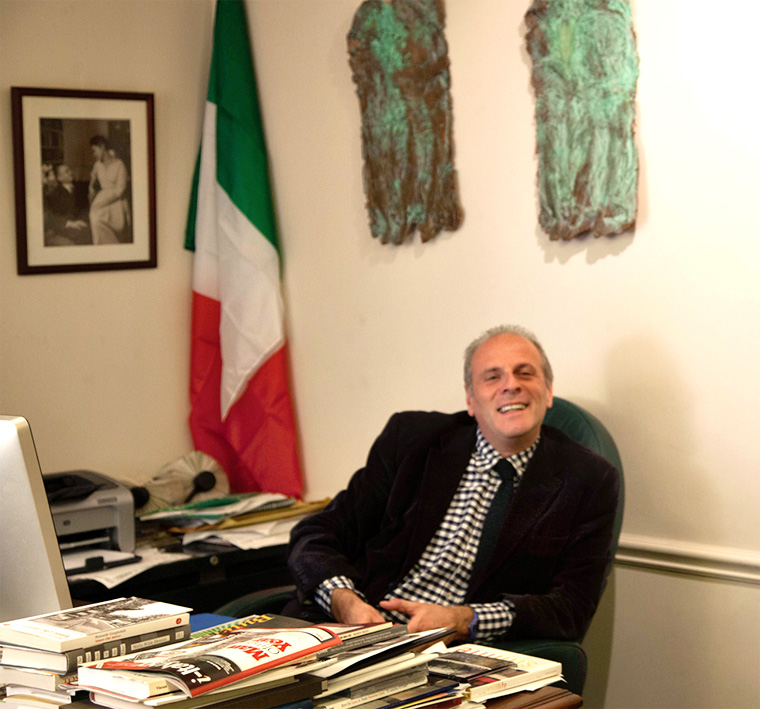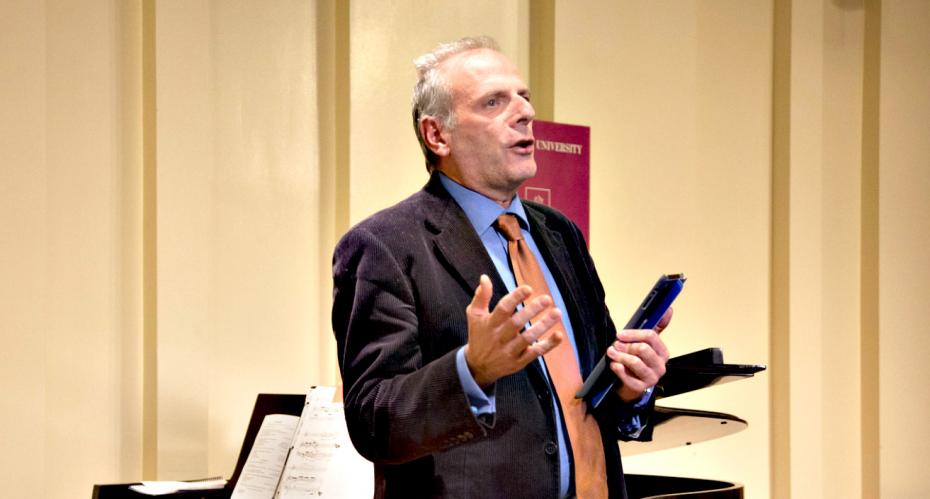In the Greenwich Village, at 24 West 12th Street, beats the proud heart of Casa Italiana Zerilli-Marimò, the home of Italian Studies at New York University that for almost 26 years has served the community as the cultural hub of Italy in the States.
“Everyone has a place at Casa,” writes Ph.D Director Stefano Albertini during our email interview, remembering the spirit that founder of Casa Italiana, Baroness Mariuccia Zerilli-Marimò, wanted to spread with the opening in 1990.
From that November 13, experts in all periods of Italian literature and other disciplines have crossed the doorsteps of Casa Italiana. As the website states, subjects range from “political theory to cinema, to the history of science to the figurative arts.”
Today ranking as one of the best Italian Studies program in the country, Casa Italiana is the result of outstanding leadership and generosity of an Italian woman with Milanese roots, that to overcome the loss of her beloved husband Guido, pushed herself to create something unique for all art and culture aficionados.
Albertini was lucky enough to closely work with her, for 20 plus years, until life decided it was time for “la Baronessa” to reach her husband. Mariuccia Zerilli passed away last October and during the Memorial Tribute at the Casa, Albertini closed with a short poem by Attilio Bertolucci promising her and all of us “her absence from this home will be her more intense presence.”
He is keeping up the good work. In fact to my question “what improvements do you wish to see at Casa 5 years from now?” Albertini writes: “I want to strengthen our live streaming capabilities in order to increase remote participation at our events, and I want to diversify our audience more. I want Casa to supply research grants and fellowships. I want Casa to be an incubator of projects and ideas, and not just a display cabinet.”
The wish to expand doesn’t come as a surprise thinking about the philosophy “think global, act local” that for years Albertini has endorsed. In fact, he never stopped spreading his deep connection to Bozzolo, a small town in the province of Mantua, while in New York.

When did you move to New York and what has been the process for you to become director at Casa Italiana?
I moved to New York in 1994 to complete my dissertation under the guidance of Prof. John Freccero, who had been appointed Chair of the Department of Italian Studies at New York University. I was offered a teaching position and also accepted the position of Assistant Director of Casa Italiana, which was vacant. Four years later, James Ziskin – the Director – moved on to pursue a career in the private sector and, after a selection process, I was appointed Director.
What does it mean for you to be an Italian in America?
Being an Italian in this country is an asset and not a disadvantage. I have felt this way since the first reactions I witnessed from my fellow students in Virginia and California upon learning my nationality: their eyes would light up and they would express a great deal of excitement and curiosity.
What values are you committed to spread, through Casa Italiana, among the American culture about the Italian?
Our mission is to create a dialogue. Italian culture is a complicated agglomerate of different cultural backgrounds, so I think that a multitude of experiences can give birth to a single identity, albeit a multifaceted one.
Do you believe the Italian-American community is still alive in New York? If so, in what way? And how would you compare it to the one of 25 years ago?
It is very much alive, today. However, it has changed in a radical way, especially when you look at the aggregating force behind each small Italian-American community. When I first moved here, the Italian-Americans in Manhattan had already broken off from their centers of gravity, such as a particular church or market; but when I would visit my Italian-American students in Bensonhurst or in the Bronx, the older generations were still tightly knit and centered around groups of people who came from the same area or even the same tiny village. Today, young Italian-Americans don’t gravitate around the same center their grandparents did, but their identity still runs strong. It is because of these changes that some people have problems recognizing that it is still alive and well.
Can you please explain the Casa’s principle “All we who are learned are Italians?” What does it mean and what does it stand for?
The expression is attributed to Erasmus of Rotterdam who stated that – during the 15th and 16th centuries – culture and art identified themselves with what was being generated in Italy. Casa has adopted these words because it doesn’t promote Italy, it promotes Culture.
Since you became director in 1998, what major improvements have you brought to the Casa?
Over the past two decades, Casa has moved from hosting sporadic events to establishing series of events that our public can expect and count on, as well as building upon the link with the Department of Italian Studies in organizing more and more academic programs. Casa has also re-enforced itself with a growing staff and with substantial technical upgrades. Our website now holds over 400 complete video recordings of recent events, allowing our audience to be virtually present from anywhere in the world.
Casa Italiana is a place of culture where ideas are spread and many events take place. Which manifestation are you most proud of, and why?
With over 120 events being presented every year, it is impossible to pick just one. Those I like best are the ones that lead to the birth of a new project that returns to this building years later as an event in itself. Recently, we had an experience of this sort with the documentary “Before Neorealism”, directed by David Lee Morea that was conceived, developed and presented under our roof.
Please tell us an anecdote that took place at Casa Italiana.
Casa exists out of the brilliant vision of its founder Baroness Mariuccia Zerilli-Marimò, who passed away just a few months ago. Once, during a concert, a mother carried out her 4-year-old child in tears. The Baroness, who was seated next to me, got up and disappeared from the Auditorium. Fifteen minutes later, she reappeared carrying the child in her arms. She had gone to convince the mother that the child had the right to listen to the concert even if he was restless and noisy. That was her message: Everyone has a place at Casa.
As a propagator of Italian culture, have you noticed a decrease in terms of the number of artists shaped by Italy? If so, what do you think happened?
On the contrary, there are more and more! Following recent crises, ever more artists come here looking for those opportunities they cannot find at home.



























